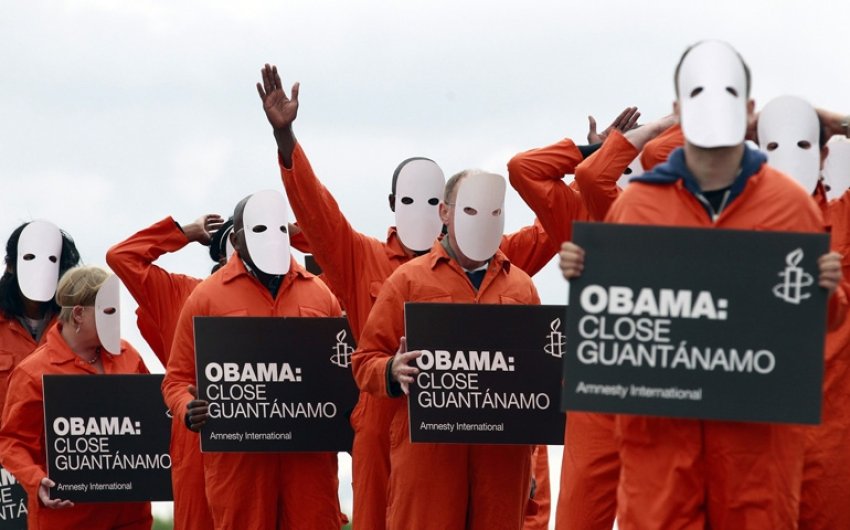
Anniversaries for detention centres, concentration camps and torture facilities are not the relishable calendar events in the canon of human worth. But not remembering them, when they were used, and how they continue being used, would be unpardonable amnesia.
The first prisoners of the absurdly named “War on Terror” — declared with such confused understanding by then-United States President George W Bush — began arriving at the newly constructed Camp X-Ray prison at the US naval base in Guantánamo Bay, Cuba, on January 11, 2002.
Structurally crude, it was intended as a temporary facility, remote and out of sight. Instead, it became a permanent and singular contribution of US political and legal practice, withering due process and civil liberties along the way.
After two decades, 779 prisoners have spent time there, many of whom were low level operatives of minimal importance. Prior to being sent to the camp, the detainees endured abductions, disappearances and torture in US-operated centres in allied countries. The previous director of the Central Intelligence Agency, Gina Aspel, had more than a nodding acquaintance with this process, having overseen operations at a black site in Thailand specialising in interrogating al-Qaeda suspects.
Guantánamo Bay was a mad, cruel experiment about how legal limbos and forged purgatories of the law can function to dehumanise and degrade. It was developed by people supposedly versed in a liberal legal tradition but keen to make exceptions in battling a supposedly novel enemy. The detainees were deemed “unlawful enemy combatants” — as if there was such a thing — thereby placing them outside the formal protections of humanitarian law. They were subjected to sleep deprivation, forced feeding, lengthy detainment, beatings, stress positions and other torture.
In 2005, US Vice President Dick Cheney sneered at suggestions that the inmates were being mistreated. “They’re living in the tropics. They’re well fed. They’ve got everything they could possibly want. There wasn’t any other nation in the world that would treat people who were determined to kill Americans the way we’re treating these people.”
The closure of the facility has been constantly urged with minimal return. It was one of the electoral messages of the presidential campaign in 2007. Democratic presidential hopeful Barack Obama and rival, Hillary Clinton, endorsed the idea, as did Republican contender John McCain. Obama declared at the time: “In the dark halls of Abu Ghraib and the detention cells of Guantánamo, we have compromised our most precious values.”
A joint US-European Union statement from June 15, 2009, noted, with welcome, the decision by President Obama to affect a closure of the prison by January 22 the following year. But it also acknowledged what has been a persistent problem: returning detainees to their countries of origin or a third country that might be willing to accept them.
In the dying days of the Obama administration, the facility, despite a reduction in the inmate population, remained functional. Congress proved recalcitrant and obstructive on the issue but there was also opposition to the closure from various arms of government, including the Pentagon. Lee Wolosky, Obama’s former Special Envoy for Guantánamo Closure, could only marvel darkly at this seemingly indestructible piece of legal infrastructure. “In large part,” he wrote, this mess had been “self-inflicted — a result of our own decisions to engage in torture, hold detainees indefinitely without charge, set up dysfunctional military commissions and attempt to avoid oversight by the federal courts".
Donald Trump, the eventual victor of the 2016 US presidential contest, repeatedly insisted that he would “load [Guantanamo prison] with some bad dudes”. In 2018, he signed a new executive order keeping the military prison open, reiterating the line that terrorists were not merely “criminals” but “unlawful enemy combatants”. Releasing any such individuals from Guantánamo had been, he observed gravely, a mistake. “In the past, we have foolishly released hundreds and hundreds of dangerous terrorists only to meet them again on the battlefield, including the ISIS leader, [Abu Bakr] al-Baghdadi, who we captured, who we had, who we released.”
On the occasion of the 20th anniversary of the camp’s opening, Agnès Callamard, secretary-general of Amnesty International, was yet another voice to urge its closure. “President Joe Biden, like President Barack Obama before him, has promised to close it, but so far has failed to do so.” She insisted that each detainee’s case be resolved, be it through transfer and release, or via “a regularly constituted federal court without recourse to the death penalty”.
Despite being an enduring blot on the US’s credibility, the facility remains ingloriously open, a reminder that there are legal provinces where the US is willing to detain people indefinitely, without trial or scrutiny. Thirty-nine men remain, thirteen of whom are in indefinite detention. This is despite the latter having had their transfers out of the facility approved a decade ago. The calls for the military prison’s closure reach occasional crescendos, but these eventually diminish before the machinery of stifling bureaucracy. Tragically, there is every risk that the Guantánamo experiment will be replicated rather than abolished. Such creations, once brought into being, can prove deathless.
[Dr Binoy Kampmark lectures at RMIT University, Melbourne.]